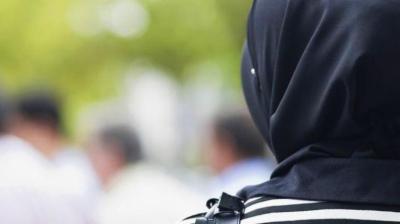San Francisco, Nov 29: A Hijab-clad Muslim student was allegedly struck in the face with a glass bottle in broad daylight at a university campus in the US, the latest in a series of hate incidents in which headscarf-wearing women have been targeted following Donald Trump's win.
 The Council on American Islamic Relations has offered a reward of $ 5,000 for information that leads to the arrest and conviction of whoever assaulted Nasro Hassan, a 19-year- old a Somali American student, on the campus of the University of Washington, Seattle.
The Council on American Islamic Relations has offered a reward of $ 5,000 for information that leads to the arrest and conviction of whoever assaulted Nasro Hassan, a 19-year- old a Somali American student, on the campus of the University of Washington, Seattle.
Hassan was wearing a head scarf when she was hit in the face with a glass bottle. The attack happened in broad daylight on November 15.
"The incident, which possibly fits a pattern of hate attacks against American Muslim women locally and nationwide, has caused a wave on concern on campus for their own security," Arsalan Bukhair, executive director of CAIR of Washington, was quoted as saying as Seattle Post- Intelligencer.
The student suffered bruises on her face and a concussion. Mina Sultana, co-president of the Muslim Student Association at the University of Washington (UW), said the assault has increased concerns about the safety.
"Since the incident fear about personal safety has increased significantly among Muslim students on campus," she said.
Students and leaders are especially concerned because they say UW police failed to notify the campus community about the assault. The department says it followed federal criteria about informing students of criminal activity on campus.
Major Steve Rittereiser of the UW police was quoted as saying, "This particular situation didn't fit that criteria. It's listed as an assault case, and an assault case general doesn't get that type of notification."
Ayn S Dietrich, spokeswoman for the FBI's Seattle office, said the agency was aware of the incident but would "defer to the investigation by the primary responding agency, and maintain communication should our partners develop information that suggests a federal crime was committed."
The incident comes amid a slew of intimidation and assault cases that have been reported across the country against hijab-clad women post election.
Earlier this month, a hijab-clad woman was allegedly accosted at a US store by another customer who called her a "terrorist" and told her to "get out" of the country.
Also, a Muslim student's hijab was allegedly ripped off and her hair pulled down by a classmate at a school in Minnesota.
In another incident, a Muslim student of Michigan University was approached by an unidentified man who yelled at her and threatened to set her on fire if she did not remove her hijab.






Comments
Add new comment